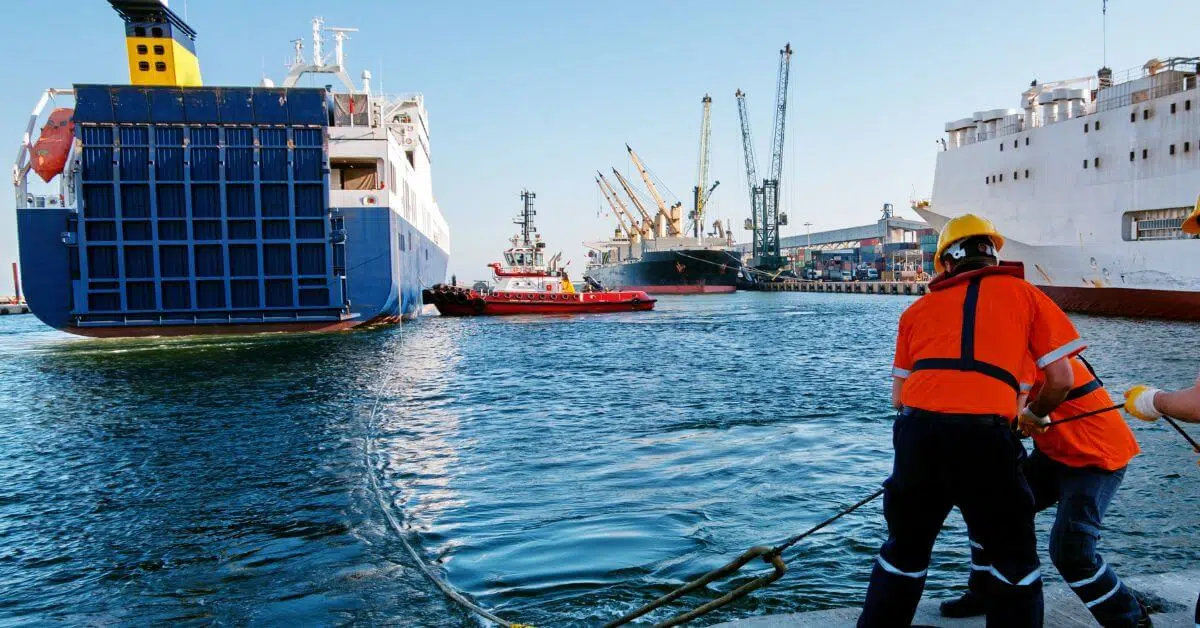In the early years like 1930, the majority of Turkish shipowners owned only a single vessel. Most of them also saw their shipowning careers end, either during their lifetimes or after their deaths, as their relatives did not continue the business. During these years, when the tendency to sustain shipowning within families was very limited, another single-ship owner, Mehmetzâde Şevket Ahmet Bey—Şevket Ahmet Mehmetoğlu—likely due to a lack of capital and accumulated knowledge, purchased a general cargo ship built in England in 1900, with a gross tonnage of 3308 grt, in partnership with another individual recorded in the registry as “B. Bey.” They named the ship “Neptün.” Five years later, they withdrew from the maritime trade world.
The general cargo ship built at Bay Yard slipways in Port Glasgow by Anderson Rodger & Co., with slipway number 346, was named “Tugela.”
It was launched on February 18, 1900, and entered service the same year.
It had a gross tonnage of 3308 grt, a net tonnage of 2148 nrt, and dimensions of: overall length—326.2 ft, beam—48.1 ft, depth—23.7 ft.
Built by Anderson Rodger & Co. in Port Glasgow, its triple-expansion main steam engine had a maximum power of 281 nhp.
The first shipowning firm was Glasgow-based Glasgow Navigation Co. Ltd. – Maclay & McIntyre. It was registered at the port of Glasgow on March 29, 1900. In 1915, it was purchased by London-based Anglier S.S. Co. Ltd. – Brys & Gylsen Ltd. and renamed “Anglier.” In 1918, it was acquired by London-based Lloyd Royal Belge (Great Britain) Ltd. In 1923, Demetrios M. Logothetis from Andros purchased it and renamed it “Karolos.” In 1933, Mehmet Şevket Ahmet Bey & B. Bey from Istanbul bought it and renamed it “Neptün.” In 1938, Sadıkzade Ruşen Oğulları Vapurculuk Şti. from Istanbul acquired it and renamed it “Platin.”
On November 28, 1941, while docked at İzmir Port, a fire broke out in its No. 3 hold. The fire was extinguished by flooding the hold. The steamship Platin had arrived in İzmir after voyages to İskenderun, Fethiye, and Marmaris. Its holds contained sulfur, caustic soda, artificial fertilizer, bleaching powder, zinc, zinc salts, and cottonseed oil. Part of this cargo belonged to İş Bankası, and another part belonged to Sadıkzâde Ruşen. Shortly after the workers left the ship, smoke began rising from the hold, and the ship’s master, Captain Halil İbrahim Enünlü, ordered the hold to be flooded while also notifying the İzmir Fire Department. Eventually, the fire was extinguished by continuously flooding No. 3 hold.
On January 31, 1957, while sailing in ballast from Istanbul to Zonguldak, the freighter Platin ran aground near Öreke Kayalıkları Burnu (Küçük Ada Gerede rocks) in the Istanbul Strait’s Black Sea exit due to a snowstorm, and the risk of breaking apart increased. The crew was rescued by firing rockets from the shore, but the boatswain was swept away by the waves and lost.
An oil painting of Platin under the name “Anglier” is part of the Greenwich Maritime Museum collection.





